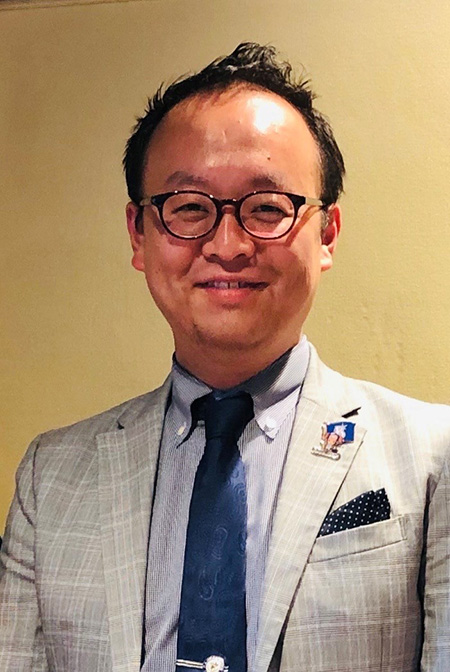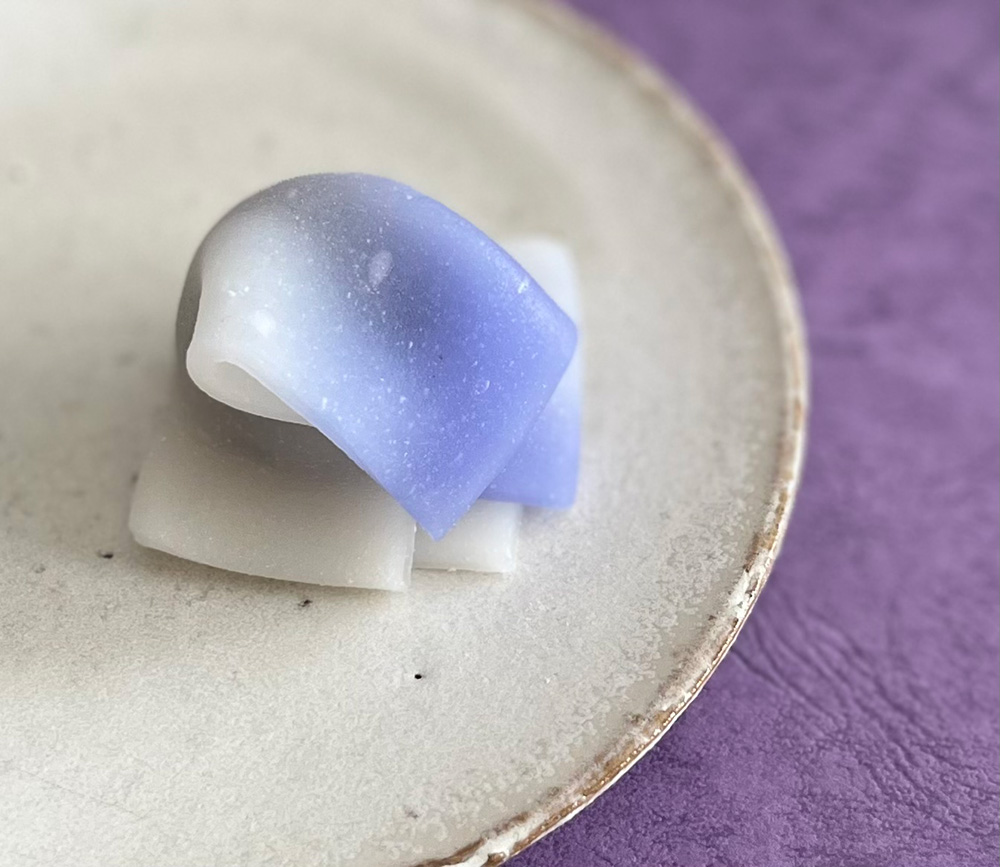World Wide WAGASHI~かわいい和菓子の世界~①
日本が世界に誇れる芸術といってもいいかもしれません。その製法、素材選び、歴史……和菓子のことをもっと世界に知ってもらいたい! いえ、日本人にだってもっと広まってほしいと切に願っています。そこで、老舗百貨店「髙島屋」の和菓子バイヤーとして日本中を飛び回り、常に和菓子と向き合っている畑 主税さんに、和菓子の魅力を語っていただくことにしました。
WAGASHI, an art form that Japan proudly offers to the world.
From the production methods and selection of ingredients to the history….find out more about the world of WAGASHI sweets!
As WAGASHI buyer for the long-established department store Takashimaya, Chikara Hata is no stranger to WAGASHI, and here shares the appeal of WAGASHI.

はた・ちから/47都道府県1000軒以上の和菓子店を実際に訪れ、10000種類以上の和菓子を食べてきた、髙島屋全店の和菓子担当バイヤー。2003年、髙島屋入社、2006年から和菓子売り場担当、2009年から和菓子担当バイヤーに就任。全国各地の和菓子のために奔走する日々。銘菓百選
また、リアルな和菓子情報を、InstagramやTwitterで発信中。著書に『ニッポン全国和菓子の食べある記』(誠文堂新光社)。
As WAGASHI buyer for all of Takashimaya’s stores, Chikara Hata has personally visited over a thousand WAGASHI shops in all of Japan’s 47 prefectures, and has sampled more than 10,000 kinds of WAGASHI. Hata shares information about authentic WAGASHI on Instagram and Twitter.
雅な外見に隠された平安歌人の言葉遊び
A Heian poet’s wordplay hidden behind an elegant appearance

千本玉壽軒の「唐衣」 454円
桜が散り、青葉が生い茂り始め、初夏を迎えるこの時季。忘れてはならない京都の伝統的な意匠の生菓子があります。
ひときわ雅やかで美しい装いの「唐衣」です。
銘菓「西陣風味」でも親しまれている老舗「千本玉壽軒」の店頭で見つけると、僕はすぐにその子を連れて帰りたくなるわけです。
何と申しましょうか、平安時代にタイムスリップして、薄紫色の麗しい衣をまとっているような気分になるのです。
青みがかった紫色から白い色へとグラデーションの、しっとりとした外郎生地を折り畳むようにしてこしあんを包んだ生菓子ですが、このお菓子がなぜこの時季に登場し、この銘なのかを知ると、これまた奥深く、興味惹かれるものがございます。
お気づきの方も多いかと思いますが、このお菓子の形、何かに似ていると思いませんか?
そう、この時季に花を咲かせるアヤメやカキツバタなどの仲間の花の形です。
実はこの「唐衣」は湿地を好んで咲くカキツバタを表現した生菓子になります。
正直なところ、アヤメとカキツバタは見分けにくいほどによく似た花ですが、なぜカキツバタと断言できるかと申しますと、そのお菓子の名前になっている「唐衣」に言葉遊びが隠されているのです。
その菓銘は『伊勢物語』の東下りの段に登場する歌人・在原業平の有名な和歌を元にしています。
唐衣 着つつ慣れにし 妻しあれば はるばる来ぬる 旅をしぞ思ふ
この第一句を引用していまして、和歌の各句の頭文字を並べますと「かきつばた」となるのです。
華麗な衣のように見えて、カキツバタという花を模して作られているというからくり。
そんなところまで考えられているのかと、京菓子だからこその表現力にただただ感銘するばかり。
「唐衣」はこの時季、いろいろな和菓子屋さんで見受けることができ、その美しさには見惚れるものがあります。
※例年、4月20日ごろから5月末日の販売
Senbon-tamajuken”Kara-koromo” ¥454
With the early summer season upon us, Kara-koromo are the not-to-be-forgotten traditional WAGASHI sweets from Kyoto. Buying and taking some home from the long-established shop Senbontamajuken, these WAGASHI will take you back in time to the Heian period, as if you were wearing the clothes from the period. This is because the dewey uiro mochi, colored with shades progressing from purple to white, is wrapped around anko bean paste, just like kimonos from the Heian period.
Why do these sweets appear during this season, and how did they get their name?
These sweets are shaped like ayame and kakitsubata irises that bloom during this season. “Kara-koromo” means “kakitsubata”—a hint as to why is that “kakitsubata” is a play on words hidden inside the name “Kara-koromo.”
The name is based on a famous poem by, Narihira Ariwara, a poet of the Heian period. The first line of the poem is “Kara-koromo,” and the first character of each of the next five lines begin with the sounds Ka-Ki-Tsu-Ba-Ta in Japanese. Thinking about such origins, it’s amazing to learn about the expressive power of Japanese WAGASHI sweets.
This season, beautiful “Kara-koromo” are being made in many WAGASHI shops.
Available for sale from around April 20 to May 31.
千本玉壽軒/せんぼんたまじゅけん
https://sentama.co.jp/index.html
ADDRESS/京都府京都市上京区千本通今出川上ル上善寺町96
TEL/075-461-0796 OPEN HOUR/8:30~17:00 CLOSE/水曜
